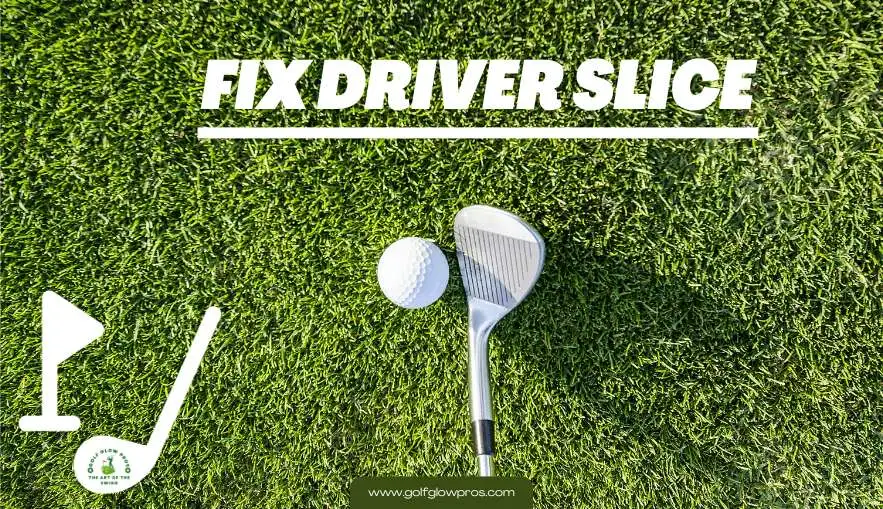Perfecting your swing doesn’t have to take a lifetime, but even after decades of playing, there will always be tweaks that can improve your game. There are a few shortcuts to playing better golf for beginners and experienced players getting back into the swing. This article explains the most common golf mistakes and the simple steps anyone can take to correct these common golf mistakes on the course.
I’d guess that in an average round of golf, you hit about 10% of your total shots “great.” Another 30- 40% are considered good shots, while the remainder are considered misses.
The point is, your golf game is a game of missed opportunities. So, this is the main part of another common golf mistake.
The average golfer makes a plethora of errors, but the good news is that you can still score well. To get the most out of your golf swing, you don’t have to hit every shot perfectly.
But there are some errors that are far too simple to correct to be repeated. Continue reading to learn the most common mistakes that the average golfer makes and how to quickly correct them.
When you’re finished reading and implementing, your bad habits will be gone, and you’ll be able to hit the ball much better. You will not make these common mistakes again.
Basic Golf Swing Mechanics
Place your feet shoulder-width apart; subsequently, bend your knees a little and hold the club comfortably. This prepares the ground for a strong swing.
Don’t choke the club; instead, hold it loosely. Ensure that your hands function as a single, cohesive hand for improved control.
Turn your shoulders, and keep the clubhead low to start the backswing. These motions are deliberate and fluid; furthermore, they are not jerky.
Raise the club with a fluid motion that permits your hips and shoulders to align. Additionally, to stay focused, keep your gaze on the ball.
Reach the summit all the way. Just pause long enough to keep your balance, then move into the downswing.
Start with your hips, then move on to your arms and shoulders. Envision seamlessly ‘slotting’ the club into the proper trajectory for maximum force and precision.
Use a lead arm that is slightly bent to strike the ball. Release your stored energy with your shoulders and hips facing the target.
Swing the ball through with fervor. Additionally, allow your body to naturally rotate and bring the club to rest over your shoulder.
Throughout, keep your balance; don’t let the thrill of the swing knock you off balance.
While bending at the hips, keep your back straight. Good posture ensures a repeatable and constant swing.
How to Fix a Slice in Golf?
1. Identify the Issue
To begin with, examine your golf swing to determine the exact location of the slice.
2. Grip Adjustment
Make sure you have the proper grip; opening the clubface during the swing can be avoided with a neutral grip.
3. Stance Alignment
To prevent an open clubface, first, check the alignment of your stance. Ensure the target line should be parallel to your shoulders, hips, and feet.
4. Address Ball Position
To promote a more inside-out swing path, place the ball slightly inside your front foot. Additionally, ensure that your stance is balanced and your weight is evenly distributed between both feet.
5. Backswing Path
Moreover, to stop the over-the-top motion, concentrate on returning the club on a shallower, inside path.
6. Rotate Hips and Shoulders
In order to encourage a proper downswing and lessen the possibility of an open clubface, engage your hips and shoulders.
7. Weight Transfer
Make sure that the weight shifts from the back foot to the front foot smoothly for a balanced swing and better control.
8. Follow Through
With a strong follow-through to finish your swing, consequently, you can aim the club at the intended target.
9. Practice Regularly
These modifications become more automatic during real play as a result of regular practice.
10. Seek Professional Help
Additionally, consider taking professional golf lessons to get tailored advice on how to improve your slice.
How to Stop Slicing Driver?
First, watch your shots to determine the exact location where the ball is slicing.
Make sure you have the proper grip; moreover, too much slicing can be avoided with a neutral grip.
Adjust your posture so that you are square on the target to avoid making an open clubface.
Make sure the clubface is square at impact to reduce the chance of a slice. Additionally, ensure the clubface is square at impact to reduce the chance of a slice.
For improved control, increase the way your body rotates during the swing.
Don’t rush the swings; instead, keep a steady, fluid tempo.
Make sure that you shift your weight from the backswing to the downswing correctly for balance and control.
Use slicing correction exercises to help reinforce correct form.
For individualized advice and corrections, consult a golf professional of Common Golf Mistakes.
It takes time to get better, so be persistent and patient while you work on your swing.
Fix Driver Slice
In golf, fixing a driver slice is taking care of the problems that make the ball curve excessively when you hit a shot with your driver, either left to right (for right-handed players) or right to left (for left-handed players).
Here are some typical methods for repairing a driver slice:
1. Start by Addressing Grip
In order to lay a strong foundation for a powerful swing, make sure your grip is firm but not too tight.
2. Position Your Feet
Position yourself so that your feet are shoulder-width apart for balance and stability.4
3. Square Your Shoulders
In order to facilitate a straight and precise drive, position your shoulders parallel to the target.
4. Check Ball Position
To get the best contact possible for a longer, straighter shot, place the golf ball just inside your left heel.
5. Engage Your Hips
During the backswing, smoothly rotate your hips to create a torque that will extend your distance.

6. Maintain a Smooth Tempo
To improve accuracy, take your time swinging and concentrate on moving in a rhythmic, controlled manner.
7. Keep Your Head Still
Throughout the swing, resist the temptation to raise your head too soon and keep your attention on the ball.
8. Follow Through
For optimal power and accuracy, additionally, fully extend your arms in the direction of your target after completing the swing.
9. Practice Regularly
By practicing frequently, you will develop muscle memory and improve your driver slice correction over time.
10. Seek Professional Guidance
To receive individualized advice for enhancing your swing technique, consider enrolling in golf lessons from a professional.
How to Stop Slicing the Golf Ball?
Verify your grip first. Additionally, make sure your hands are balanced—not too strong or too weak—on the club.
At impact, concentrate on squaring the clubface. In order to mitigate the slicing tendency, the clubface should be closed at impact.
Furthermore, verify that your posture is correctly positioned. The target line should be parallel to your shoulders, hips, and feet.
Examine your alignment again. Occasionally, a minor modification to your target line can have a significant impact.

In your swing, additionally, keep the tempo steady and fluid. Furthermore, avoid rushing, as it may result in a sliced shot and an open clubface.
Be mindful of how you follow through; moreover, a square clubface at impact is ensured by appropriate follow-through.
Moreover, make drills a part of your practice regimen. Furthermore, focus on drills made to deal with your slice’s underlying causes.
Certainly, go ahead and enroll in a golf pro’s lessons. Additionally, they can correct any simple swing errors and provide you with personalized advice.
During practice, use ground-based alignment tools such as sticks or clubs to guide your alignment.
Slicing is a common golf mistake, as are any other mistakes.
Common Golf Mistakes and How to Fix Them?
1. Swaying on the Backswing
Mistake: A lot of golfers sway their bodies when they come back.
Fix: Try practicing with a mirror to keep an eye on your sway while maintaining your weight centered over the ball.
2. Gripping Too Tightly
Mistake: A tight grip on the club reduces the fluidity of your swing.
Fix: Like a toothpaste tube, keep your grip loose and relaxed; moreover, it should be firm enough to prevent you from dropping it without being too tight.
3. Poor Alignment
Mistake: The result of misalignment is imprecise shots.
Fix: Examining your shoulders, hips, and feet, draw a parallel line with the clubface and aim it at the target.
4. Overlooking Clubface Position
Mistake: Ignoring clubface alignment changes the trajectory of the ball. However, adding proper alignment to your routine can greatly improve your shots.
Fix: To achieve a straighter shot, align the clubface with your target by squaring it at the address.
5. Lack of Follow-Through
Mistake: Abruptly stopping the swing reduces accuracy and power. So, this is another common golf mistake.
Fix: After making contact, ensure you follow through completely by extending the club toward your target.
6. Incorrect Ball Position
Mistake: Putting the ball in different places results in different shots.
Fix: Place the ball in the middle for irons and the inside of your front foot for drivers.
7. Ignoring Body Rotation
Mistake: Losing power occurs when the body is not rotated. This is an interesting common golf mistake.
Fix: Allow your body to naturally turn for a longer distance by engaging your hips and shoulders in the swing.
8. Rushing the Swing
Mistake: Hasty swinging throws off rhythm and control.
Fix: Backswing smoothly and deliberately, concentrating on timing rather than speed.
9. Neglecting Pre-shot Routine
Mistake: Ignoring a regular schedule throws off concentration and performance.
Fix: Establish a pre-shot routine in which you take a deep breath before swinging, check alignment, and visualize the shot.
10. Ignoring Club Selection
Mistake: Selecting the incorrect club causes problems with accuracy and distance.
Fix: Choose the right club for each shot by taking into account variables like wind, terrain, and your own skill level.
What is a Bad Stroke in Golf Called?
1. Slice
When the golf ball uncontrollably curves to the right (for a right-handed player), it is called a slice. The cause is frequently an open clubface at impact.
2. Hook
The opposite of a slice is a hook, which, in contrast, causes the ball to curve sharply to the left (for a right-handed golfer). When the clubface closes at impact, this happens.
3. Shank
The dreaded shank, oh! This happens when the ball gets struck on the club’s hosel, which causes it to go drastically off course. It is a nightmare for golfers.
4. Skull
A skull shot is one that is fast and low and is produced when the leading edge of the club is used to strike the ball rather than the face. This frequently occurs on chip shots.
5. Fat Shot
It’s a fat shot if you dig too much turf before striking the ball, resulting in a chunky shot. The ball typically misses the mark as a result of it.
6. Thin Shot
A thin shot is the reverse of a fat shot; it happens when the clubhead hardly makes contact with the ball’s top, sending it flying low and possibly too far.
7. Duff
Any embarrassing, badly executed shot is called a duff. However, this type of shot makes you wish you could disappear from the course.
8. Whiff
Completely missing the ball is a whiff. Golfers would rather forget that moment as soon as possible because it feels like swinging in the air.
How Do You Hit a Golf Ball Farther?
To create a strong foundation, place your feet shoulder-width apart.
Make sure your hands cooperate to give you the most control possible while holding the club with a firm yet comfortable grip.
In order to produce torque and power in your shot, engage your hips in the swing.
To improve the fluidity of your swing and avoid stiffness that could limit your power, additionally, keep your shoulders relaxed.
To increase your chances of hitting the ball farther, additionally, maintain a smooth and controlled swing and accelerate the clubhead through impact.
When you follow through, fully extend your arms to allow the club to move naturally and extend the distance of your shot.
Moreover, you can’t depend just on your arms. Furthermore, to produce a well-coordinated and forceful swing, engage your torso, legs, and core.
Additionally, selecting a club that suits your desired distance and strength is crucial. Your shot distance can be greatly impacted by a well-matched club.
You can improve your technique, build muscle memory, and improve your overall golf swing with regular practice.
Swing is hampered by tension. Moreover, to fully utilize your swing’s force on the golf ball, maintain your composure, concentration, and confidence.
Common Golf Driver Mistakes
Golfers frequently have grip issues and hold the club either too tightly or too loosely. This may impair control and have an impact on the swing.
One common mistake is incorrect alignment. Additionally, for a more precise shot, align your shoulders, hips, and feet with respect to the target.
Your launch angle may be affected if you position the ball too far forward or backward in your stance. Additionally, to get the best accuracy and distance, find the sweet spot.
Discard the idea of a one-size-fits-all strategy. Additionally, for a better launch, adjust the height of your tee according to your driver and swing style.
Your swing dynamics can be affected by slouching or standing too erect. For a strong, accurate drive, however, keep your posture athletic and balanced.
It is critical to use tact rather than force. Loss of accuracy and control is frequently the result of overswinging. Additionally, maintain control and fluidity.
Weak shots can be caused by improper weight shifts during the swing.
For more power, ensure that the front foot smoothly transfers the weight from the back. An old mistake.
During the swing, keeping your eyes on the ball improves contact and helps you stay focused.
Inadequate warm-up exercises can cause tense muscles and erratic swing patterns. Before you hit the course, relax.
Frustration can result from choosing the incorrect driver for your skill level or swing style. Moreover, speak with an expert to determine which is best for your particular game.
Common Mistakes in Golf Swing
Overswinging is a common mistake made by golfers who believe that greater power translates into better shots. However, doing so may result in a loss of precision and control.
Grasping the club too firmly or too loosely is a common mistake. Additionally, a balanced swing is essential to a controlled and efficient swing.
A lot of players don’t pay attention to their posture; however, this leads to misalignment and hinders the swing. It’s crucial to keep an athletic and balanced stance.
Weak shots can arise from improperly shifting your weight from the backswing to the downswing. Additionally, for increased strength and consistency, make sure the weight transfers smoothly.
Mishits may result from positioning the ball improperly in the stance. Additionally, for maximum impact, pay attention to how the ball is positioned in relation to your feet and club.
When the wrists are released prematurely during the downswing, the clubhead may arrive too soon, which can lead to hooks or slices. Postpone the release to improve accuracy.
It’s common to misalign the clubface and body. In order to improve accuracy and lower the chance of mishits, take your time aligning yourself correctly with the target.
A well-executed swing requires a thorough follow-through. Consequently, cutting it short could cause you to lose control and authority.
Shots that go off target can result from failing to check the clubface angle at address and impact. Therefore, make sure the clubface is square to the target for a straighter ball flight.
Irritation-induced rushing swings often lead to a loss of control and accuracy. Therefore, allow ample time for correct alignment and a smooth, purposeful swing.
Correct common golf mistakes as soon as possible and enjoy a beautiful game.












